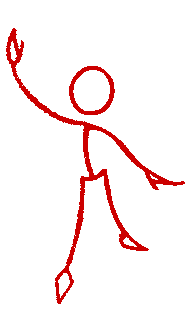
The most expensive aspect of printing any kind of material, whether it is a hardcover book, magazine, comic book, or promotional material, is paper. The reason why comics are so much more expensive now than they were in previous decades is the sky rocketing cost of paper.
Printers should supply the paper. Since they buy large quantities of paper, they can get a far better deal than you or I ever could. If a printer wants you to supply your own paper: BEWARE! This is a major warning sign of printers with cash flow problems, bad printing results (they can blame it on the paper), or generally disreputable business practices. It can also be an indication that the customer (that's you) is being a particular pain in the ass (say, by trying to haggle to much). No matter the reason, you should find another printer.
It is fairly safe to assume that printers do not make money off of paper. If they marked up the price of paper, they would no longer have competitive printing prices. This means that the price quoted for paper is non negotiable. However, different types of paper have different price ranges. So don't hesitate to talk to your printer about your paper options. Since they don't make any real profit off of paper, it won't affect their bottom line to recommend less expensive paper.
The elements that need to be weighed when picking a paper is the quality of the printed product vs. The cost. A glossy/slick paper (the kind used for comic covers) holds color better but is a more expensive than vellum or matte finish. Therefore a book printed completely with this paper is far more expensive than the average comic.
If you are printing a graphic novel or square bound book, another consideration is the thickness of the book. This is referred to as PPI (pages per inch). If your book is 200 pages using a 400ppi paper will give you a 1/2 inch spine as opposed to 1/4 inch spine for an 800ppi paper. Thicker paper may be less expensive, and give the consumer the illusion that they are getting more for their money. However using a thicker paper on a saddle stitched comic book may create production problems.
The paper I used on my book was an 60lb/400ppi offset vellum finish Springhill paper. To learn more about paper, paper grades, and printing, I HIGHLY recommend getting a copy of POCKET PAL which is listed in the book resource.
The following resource has more information on choosing paper. It is geared more for those who actual buy paper (such as printers), but has valuable information for the novice as well:
www.thepaperexpert.com
The contents of The Stickman Graphics Self-Publishing Resource Guide is copyright and trademarked 2000 by Kevin Tinsly. All rights reserved. No part of this website may be reproduced by any means, electronic or mechanical for sale or publication without written permission from the author, except for the inclusion of brief quotations in a review. Published by Stickman Graphics.
This website is designed to provide accurate and authoritve information in regard to the subject matter covered. It is displayed with the understanding that neither the publisher nor the author are engaged in rendering legal, accounting, or other professional services. If legal advice or other expert assistance is required, the services of a competent professional person should be sought. Every effort has been made to make this manual as complete and accurate as possible. However, there may be mistakes both typographical and in content. The author and publisher shall have neither liability nor responsibility to any person or entity with respect to any loss or damage caused, or alleged to be caused, directly or indirectly by the information contained in this book.
All brand names and product names used in this book are trademarks, registered trademarks, or trade names of their respective holders. In all instances where Stickman Graphics is aware of a claim, the product names appear in Initial Capital letters.